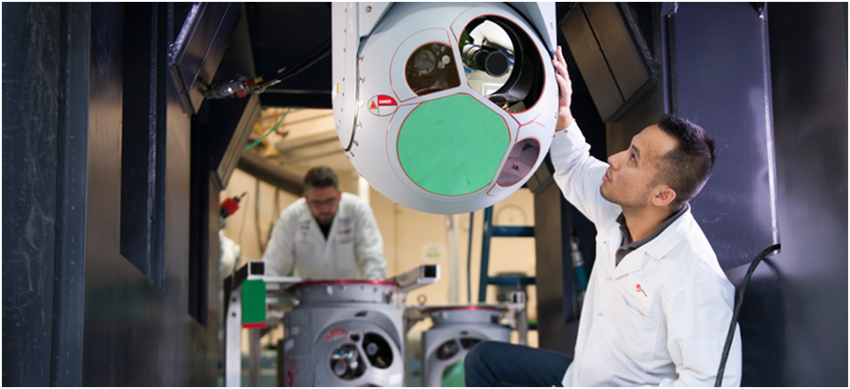![[Source: L3 Technologies ]](https://fabbaloo.com/wp-content/uploads/2020/05/image-asset_img_5eb0a2125f8e3.png)
Charles R. Goulding and Preeti Sulibhavi of R&D Tax Savers explore the implications of the Harris and L3 Technologies as they relate to 3D printing technology.
Harris Corporation and L3 Technologies have agreed to merge in an all-stock transaction to create a formidable global defense technology leader. L3 Harris Technologies, Inc. will focus on developing differentiated and mission-critical solutions for customers around the world. The combined company will be the sixth largest defense company in the U.S. and a top defense company globally, with approximately 48,000 employees and customers in over 100 countries. The anticipated net revenue is estimated to be approximately $16 billion.
The Research & Development Tax Credit
Enacted in 1981, the now permanent Federal Research and Development (R&D) Tax Credit allows a credit that typically ranges from 4%-7% of eligible spending for new and improved products and processes. Qualified research must meet the following four criteria:
-
Must be technological in nature
-
Must be a component of the taxpayers business
-
Must represent R&D in the experimental sense and generally includes all such costs related to the development or improvement of a product or process
-
Must eliminate uncertainty through a process of experimentation that considers one or more alternatives
Eligible costs include U.S. employee wages, cost of supplies consumed in the R&D process, cost of pre-production testing, U.S. contract research expenses, and certain costs associated with developing a patent.
On December 18, 2015, President Obama signed the PATH Act, making the R&D Tax Credit permanent. Beginning in 2016, the R&D credit can be used to offset Alternative Minimum tax for companies with revenue below $50MM and for the first time, pre-profitable and pre-revenue startup businesses can obtain up to $250,000 per year in payroll taxes and cash rebates.
Harris Corporation Innovation
The Harris Corporation provided mission-critical solutions to connect, inform and protect the world from ocean to orbit and everything that falls in between. Harris revolutionized space antenna production with emerging technologies, including 3D manufacturing. 3D manufacturing reduces time and waste, while increasing innovative opportunities.
In 2017, Harris launched the Inmarsat S-band/Hellas Sat 3 satellite from Guiana Space Center. This included the S-band payload, which formed the space component of the European Aviation Network (EAN). It was the world’s first hybrid satellite/air-to-ground high-speed passenger connectivity solution; EAN was designed to deliver the fastest in-flight broadband service for airlines flying throughout Europe.
The Inmarsat S-band payload relies on two new Harris fixed-mesh space reflectors (FMRs). The FMR is an ingenious hybrid design that combines the high-frequency mesh surface technology of Harris’ legacy unfurlable antennas with a fixed graphite frame. Combined, they provide an effective solution for high-throughput satellites, which are increasingly demanding larger apertures and smaller spot beams than currently possible with solid reflectors.
One of the FMR’s key advantages is its lighter weight, facilitated not only by Harris’ patented gold-plated knit wire fabric—one of the most efficient RF reflective surfaces in the world—and the graphite frame, but also by the use of 3D printed components. More than 60 percent of FMR components, including all surface fittings, are produced from titanium using 3D printing or additive manufacturing processes.
Additive manufacturing is where L3 Technologies comes into the picture. On the list of one of the top defense contractors to utilize additive manufacturing, L3 is a leading provider of global ISR, communications and networked systems, and electronic systems for military, homeland security and commercial aviation customers, as shown in the figure below. L3 was known for developing advanced defense technologies and commercial solutions in pilot training, aviation security, night vision and EO/IR, weapons, maritime systems and space. A departure from traditional manufacturing techniques, i.e. casting and machining material, additive manufacturing provides for greater flexibility. It works directly from a computer model; people can devise shapes without regard for existing manufacturing limitations.
This form of 3D printing revolutionized how high-performance products are manufactured.
![Top Performing Industry Partners for 2017 [Source: U.S. Air Force ]](https://fabbaloo.com/wp-content/uploads/2020/05/L3Harris-Image2_img_5eb0a2130e109.png)
L3 Harris 3D Printing “Syncess”
Both L3 Technologies and Harris Corporation utilized 3D printing, but for different purposes/components. Combining their efforts will allow for seamless production of Harris Corporations FMR components and all surface fittings through L3 additive manufacturing techniques. L3 Harris Technologies increased scale will enable the company to expand capabilities in providing end-to-end solutions across multiple domains of air, sea, land, space and cyber. This accelerates innovation and reduces time to market. With both leading defense contractors’ philosophy of continuous innovation and improvement, operational excellence is sure to provide meaningful value to the defense industry.











A blog post reveals much of what happens behind the scenes at 3D print service Shapeways.